Home > Directory of Drawing Lesson > Human Face and Body > Drawing the Human Face in Correct Proportions
Drawing Facial Features in Correct Proportions and Measurements in Relationship To Eachother
|
[The above words are pictures of text, below is the actual text if you need to copy a paragraph or two]
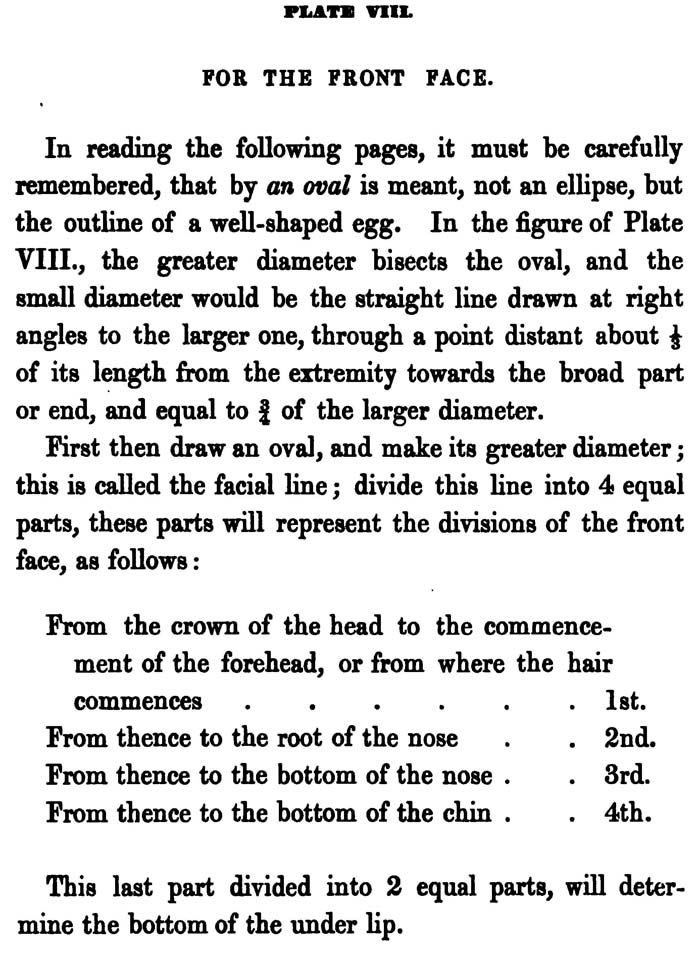

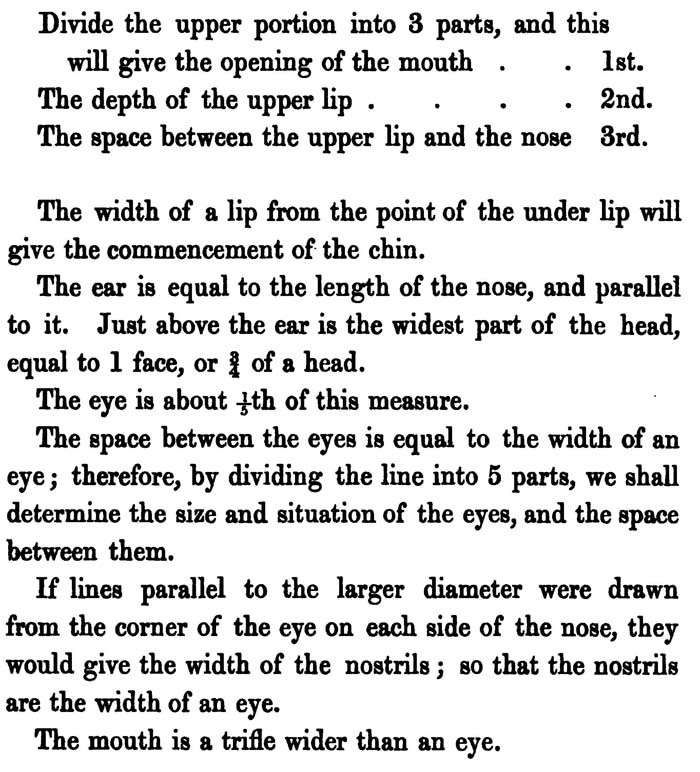
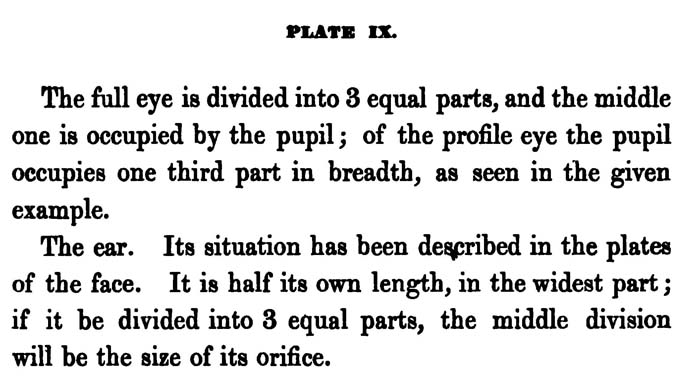

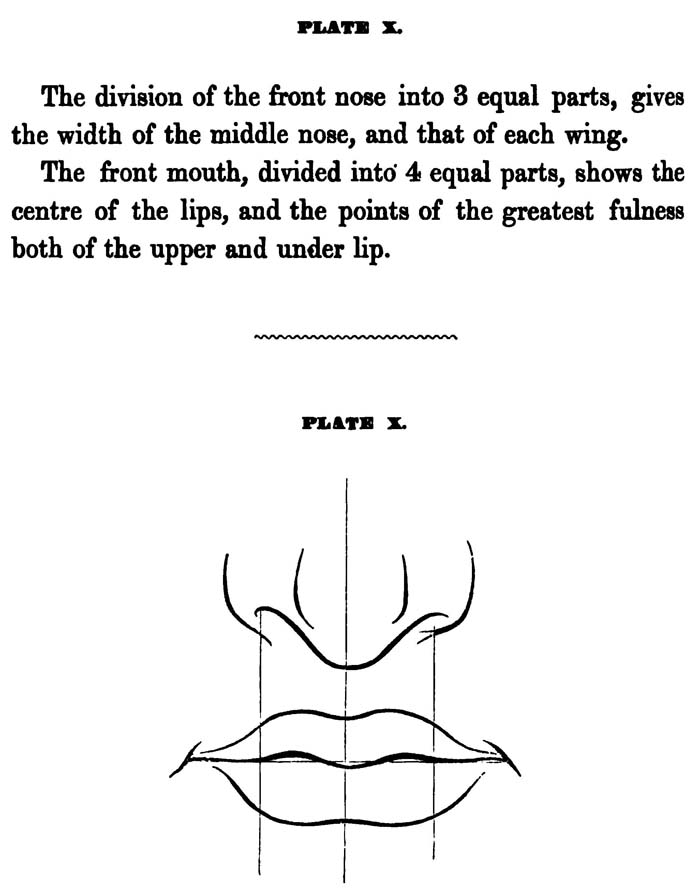
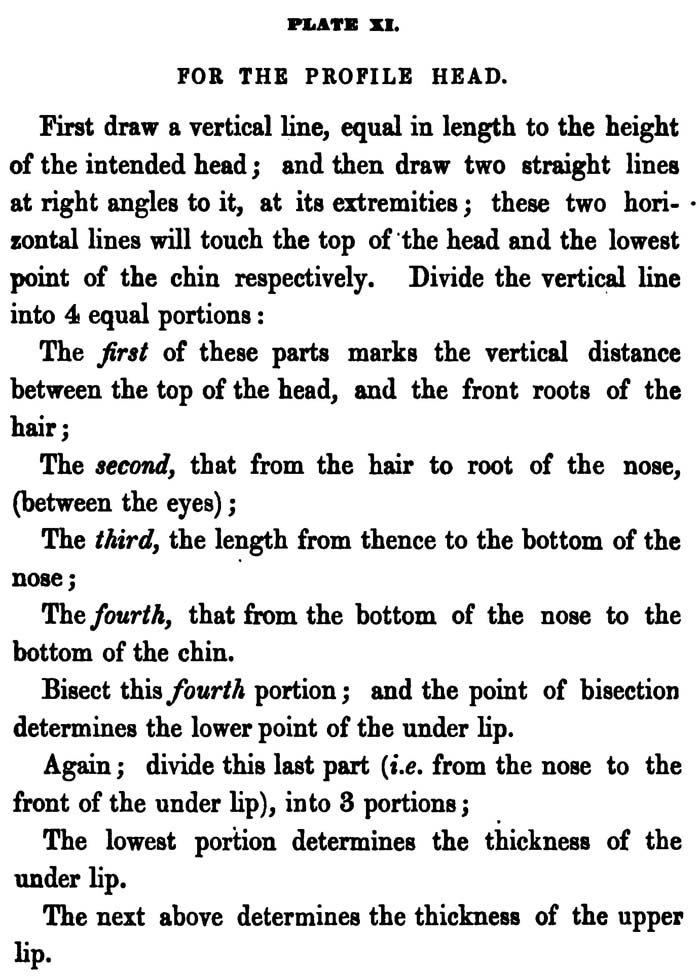
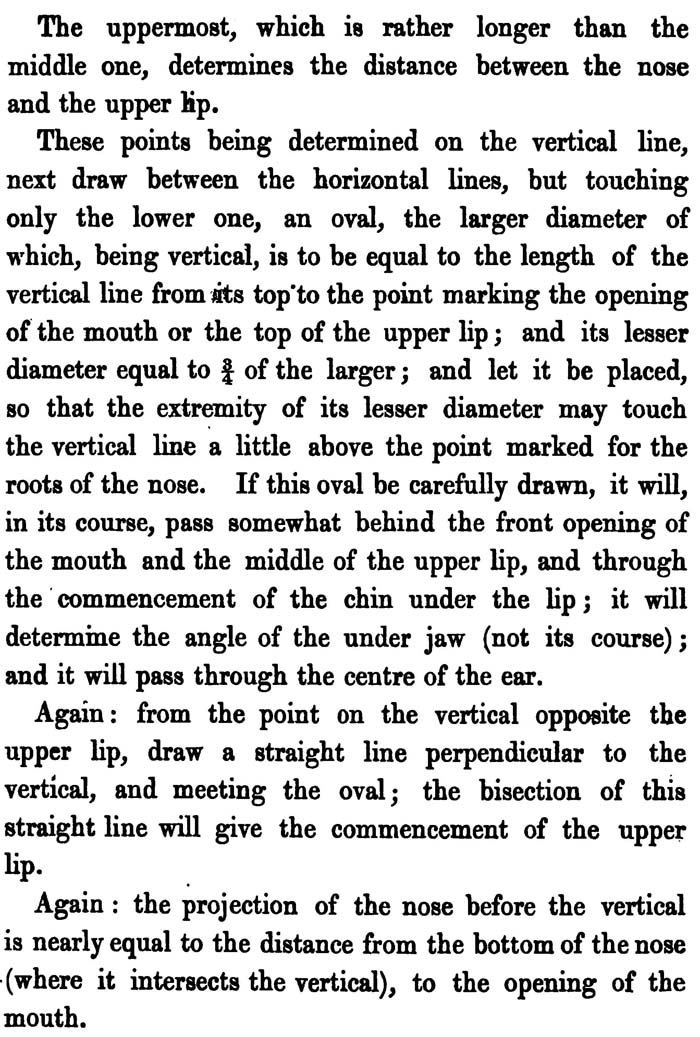
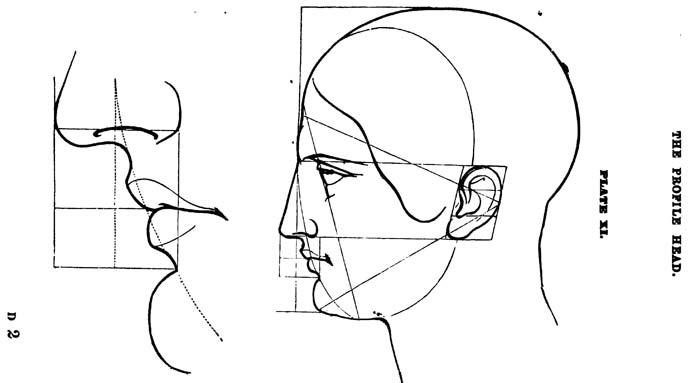
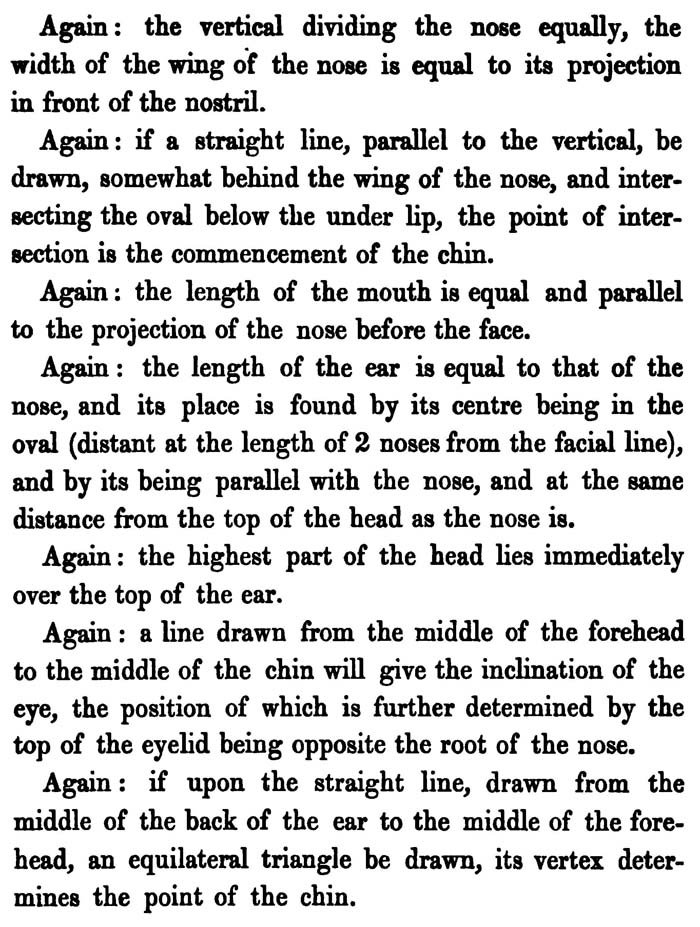
DRAWING THE FRONT FACE.
In reading the following pages, it must be carefully remembered, that by an oval is meant, not an ellipse, but the outline of a well-shaped egg. In the figure of Plate VIII., the greater diameter bisects the oval, and the small diameter would be the straight line drawn at right angles to the larger one, through a point distant about I of its length from the extremity towards the broad part or end, and equal to 3/4 of the larger diameter
First then draw an oval, and make its greater diameter ; this is called the facial line ; divide this line into 4 equal parts, these parts will represent the divisions of the front face, as follows :
From the crown of the head to the commencement of the forehead, or from where the hair commences . . 1st.
From thence to the root of the nose . . 2nd.
From thence to the bottom of the nose . . 3rd.
From thence to the bottom of the chin . . 4th.
This last part divided into 2 equal parts, will determine the bottom of the under lip.
THE FRONT FACE.
Divide the upper portion into 3 parts, and this
will give the opening of the mouth . . 1st.
The depth of the upper lip . . . . 2nd.
The space between the upper lip and the nose 3rd.
The width of a lip from the point of the under lip will give the commencement of the chin.
The ear is equal to the length of the nose, and parallel to it. Just above the ear is the widest part of the head, equal to 1 face, or 3/4 of a head
The eyes is about 1/5th of this measure
The space between the eyes is equal to the width of an eye; therefore, by dividing the line into 5 parts, we shall determine the size and situation of the eyes, and the space between them.
If lines parallel to the larger diameter were drawn from the corner of the eye on each side of the nose, they would give the width of the nostrils ; so that the nostrils are the width of an eye.
The mouth is a trifle wider than an eye.
The full eye is divided into 3 equal parts, and the middle one is occupied by the pupil; of the profile eye the pupil occupies one third part in breadth, as seen in the given example.
The ear. Its situation has been described in the plates of the face. It is half its own length, in the widest part; if it be divided into 3 equal parts, the middle division will be the size of its orifice.
THE EYE AND THE EAR.
The division of the front nose into 3 equal parts, gives the width of the middle nose, and that of each wing.
The front mouth, divided into 4 equal parts, shows the centre of the lips, and the points of the greatest fulness both of the upper and under lip.
FOR THE PROFILE HEAD.
First draw a vertical line, equal in length to the height of the intended head; and then draw two straight lines at right angles to it, at its extremities; these two horizontal lines will touch the top of the head and the lowest point of the chin respectively. Divide the vertical line into 4 equal portions :
The first of these parts marks the vertical distance between the top of the head, and the front roots of the hair;
The second, that from the hair to root of the nose, (between the eyes) ;
The third, the length from thence to the bottom of the nose ;
The fourth, that from the bottom of the nose to the bottom of the chin.
Bisect this fourth portion; and the point of bisection determines the lower point of the under lip.
Again ; divide this last part (i.e. from the nose to the front of the under lip), into 3 portions;
The lowest portion determines the thickness of the under lip.
The next above determines the thickness of the upper
lip.
The uppermost, which is rather longer than the middle one, determines the distance between the nose and the upper lip.
These points being determined on the vertical line, next draw between the horizontal lines, but touching only the lower one, an oval, the larger diameter of which, being vertical, is to be equal to the length of the vertical line from its top"to the point marking the opening of the mouth or the top of the upper lip ; and its lesser diameter equal to 3/4 of the larger; and let it be placed, so that the extremity of its lesser diameter may touch the vertical line a little above the point marked for the roots of the nose. If this oval be carefully drawn, it will, in its course, pass somewhat behind the front opening of the mouth and the middle of the upper lip, and through the commencement of the chin under the lip ; it will determine the angle of the under jaw (not its course) ; and it will pass through the centre of the ear.
Again : from the point on the vertical opposite the upper lip, draw a straight line perpendicular to the vertical, and meeting the oval; the bisection of this straight line will give the commencement of the upper lip.
Again : the projection of the nose before the vertical is nearly equal to the distance from the bottom of the nose (where it intersects the vertical), to the opening of the mouth.
Again : the vertical dividing the nose equally, the width of the wing of the nose is equal to its projection in front of the nostril.
Again : if a straight line, parallel to the vertical, be drawn, somewhat behind the wing of the nose, and intersecting the oval below the under lip, the point of intersection is the commencement of the chin.
Again : the length of the mouth is equal and parallel to the projection of the nose before the face.
Again : the length of the ear is equal to that of the nose, and its place is found by its center being in the oval (distant at the length of 2 noses from the facial line), and by its being parallel with the nose, and at the same distance from the top of the head as the nose is.
Again : the highest part of the head lies immediately over the top of the ear.
Again : a line drawn from the middle of the forehead to the middle of the chin will give the inclination of the eye, the position of which is further determined by the top of the eyelid being opposite the root of the nose.
Again : if upon the straight line, drawn from the middle of the back of the ear to the middle of the forehead, an equilateral triangle be drawn, its vertex determines the point of the chin.




